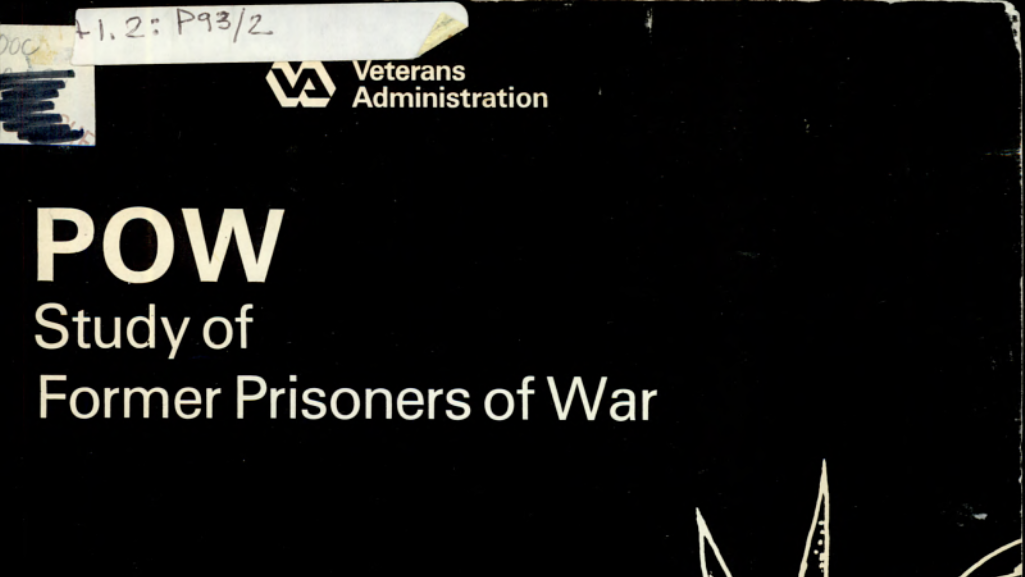The onset of the COVID-19 pandemic in March 2020 transformed ordinary life for most Americans. Workers went home, students were taught remotely, most social activities were cancelled, and the wearing of masks was recommended. As they did a century earlier when the 1918 influenza pandemic killed more than half a million people, authorities nationwide scrambled to adopt preventative measures to keep their communities safe.
Within VA, the National Cemetery Administration (NCA) made the difficult decision to suspend funeral services to protect visitors and staff. More than a year later, Calverton National Cemetery in New York—an early pandemic epicenter—held a special service to make up for what had been missed. On July 8, 2021, the cemetery presented the casket flag (pictured above) during a single solemn ceremony in which 849 Veterans belatedly received military honors.
During an eleven-week span from March 23 to June 8, 2020, committal services were placed on hold throughout the national cemetery system, preventing family, friends, honor guards, and cemetery and mortuary personnel from attending funeral programs. To meet the needs of Greater New York City, Calverton staff performed approximately fifty “direct interments” daily, without family or ceremony. The cemetery, which opened in 1978 at the eastern end of Long Island, is one of VA’s largest at more than 1,000 acres. Before the pandemic, about one hundred funeral services per week were held there.
For a full year after committal services resumed in June 2020, the families of Veterans interred during the pandemic were offered an opportunity for a traditional memorial service with military honors. These were held on Saturdays when NCA generally does not conduct burials. Families scheduled these “makeup services” for 285 Veterans. However, as of July 2021, another 849 Veterans who had been buried in Calverton since March 2020 had not received military honors. To rectify this, the cemetery quietly held an hour-long memorial service on July 8.

The program included a rifle salute, playing of “Taps,” bagpipers, and an Honor Guard folding the flag. Employees representing all the cemetery crews read the Veterans’ names aloud. Cemetery Executive Director Anne Ellis, who participated in the name-reading, explained, “It was a deeply meaningful and healing experience for the Calverton team to be able to provide honors to these Veterans interred during this extraordinary period in the history of our agency and our nation.” The flag subsequently became part of the NCA History Collection.
From the beginning of the pandemic through January 2022, Calverton performed 10,704 interments. Of these, 975 were attributed to COVID-19. The actual number is likely much higher, however, as testing was not widely available early in the pandemic, when the cemetery’s interment rate doubled.
By Sara Amy Leach
Senior Historian, National Cemetery Administration
Share this story
Related Stories
History of VA in 100 Objects
In the 19th century, the federal government left the manufacture and distribution of prosthetic limbs for disabled Veterans to private enterprise. The experience of fighting two world wars in the first half of the 20th century led to a reversal in this policy.
In the interwar era, first the Veterans Bureau and then the Veterans Administration assumed responsibility for providing replacement limbs and medical care to Veterans.
In recent decades, another federal agency, the Defense Advanced Research Project Agency (DARPA), has joined VA as a supporter of cutting-edge research into artificial limb technology. DARPA’s efforts were spurred by the spike in traumatic injuries resulting from the emergence of improvised explosive devices as the insurgent’s weapon of choice in Iraq in 2003-04.
Out of that effort came the LUKE/DEKA prosthetic limb, named after the main character from "Star Wars."
History of VA in 100 Objects
American prisoners of war from World War II, Korea, and Vietnam faced starvation, torture, forced labor, and other abuses at the hands of their captors. For those that returned home, their experiences in captivity often had long-lasting impacts on their physical and mental health. Over the decades, the U.S. government sought to address their specific needs through legislation conferring special benefits on former prisoners of war.
In 1978, five years after the United States withdrew the last of its combat troops from South Vietnam, Congress mandated VA carry out a thorough study of the disability and medical needs of former prisoners of war. In consultation with the Secretary of Defense, VA completed the study in 14 months and published its findings in early 1980. Like previous investigations in the 1950s, the study confirmed that former prisoners of war had higher rates of service-connected disabilities.
History of VA in 100 Objects
In the waning days of World War I, French sailors from three visiting allied warships marched through New York in a Liberty Loan Parade. The timing was unfortunate as the second wave of the influenza pandemic was spreading in the U.S. By January, 25 of French sailors died from the virus.
These men were later buried at the Cypress Hills National Cemetery and later a 12-foot granite cross monument, the French Cross, was dedicated in 1920 on Armistice Day. This event later influenced changes to burial laws that opened up availability of allied service members and U.S. citizens who served in foreign armies in the war against Germany and Austrian empires.







